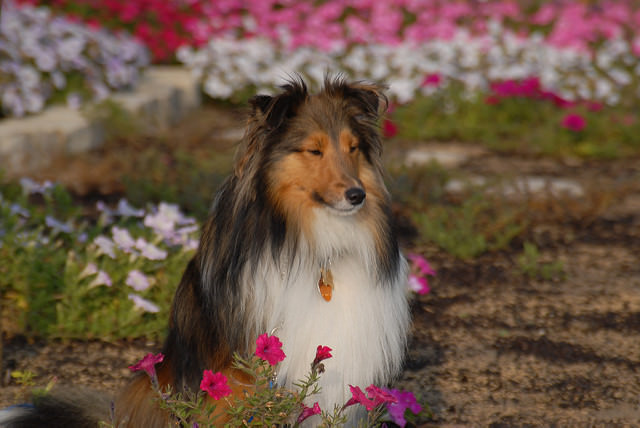Shetland Sheepdogs are such an active breed, you may think that you don’t have to worry about yours getting overweight. But Shelties loves food just as much as they do chasing things and will gladly eat to their heart’s content. Owners who over-treat will find themselves with a pudgy Sheltie quicker than you may think is possible. And many Shelties spend more time on the couch begging than they do exercising. Since obesity leads to all kinds of health problems and shortens your dog’s life, you want to be sure you are watching his weight and take him to the vet if he seems to be getting heavy. The following are three signs your Shetland Sheepdog is overweight.

#1 – No Definition
Shetland Sheepdogs should have a fairly athletic body shape. Their chest and rib cage should be clearly defined, but not overly round. Their rib cage should tuck up acutely, into a small hip. If your Sheltie feels like a sausage so you can’t tell where his ribs end and his waist begins, he is too fat. Dr. Sophia Yin’s website has a great, easy to follow guide for checking this.
#2 – Unable To Reach That Itch
Does your Sheltie struggle to reach around to get that itch on her tail or back leg? Or maybe bending around and licking her belly is impossible. A Shetland Sheepdog at a healthy weight should be able to do these things without a struggle. If they are overly round, grooming becomes impossible. If that’s the case, then it’s time to diet.
#3 – Easily Overexerted
Do you walk a few steps and your Shetland Sheepdog is already panting and wanting to stop? Barring hot weather, this is a sign that he is out of shape and probably overweight. Some may pant even when they are sedentary, as obesity causes breathing problems. If this is your Sheltie, it’s time to talk to the vet about a diet and exercise regimen that will slowly get him back on track. Be careful about pushing yours to exercise more than their body can handle, as that can cause other issues.
